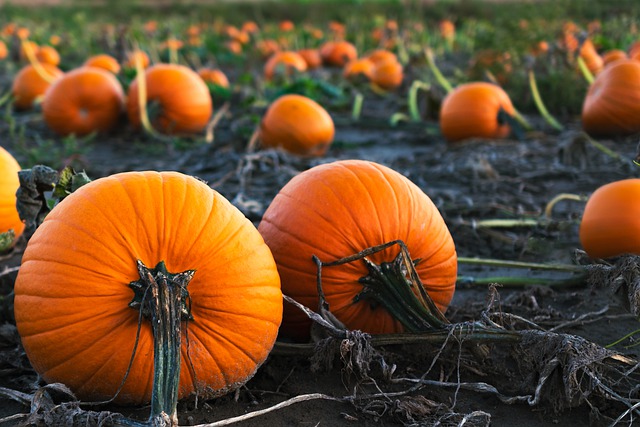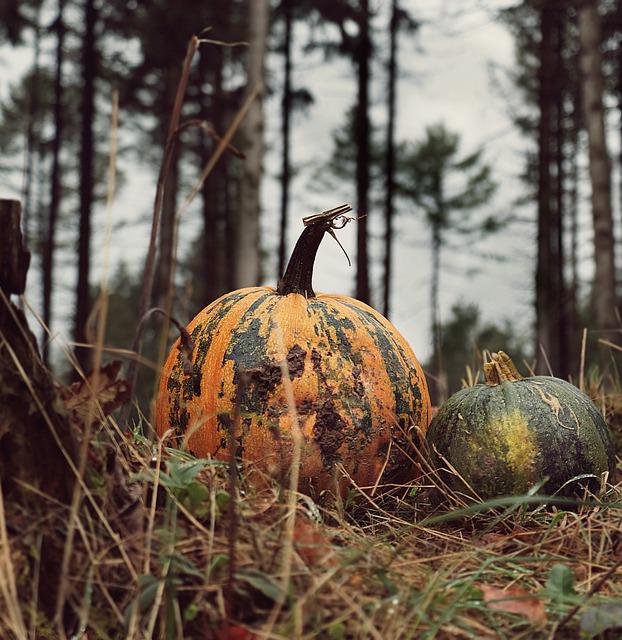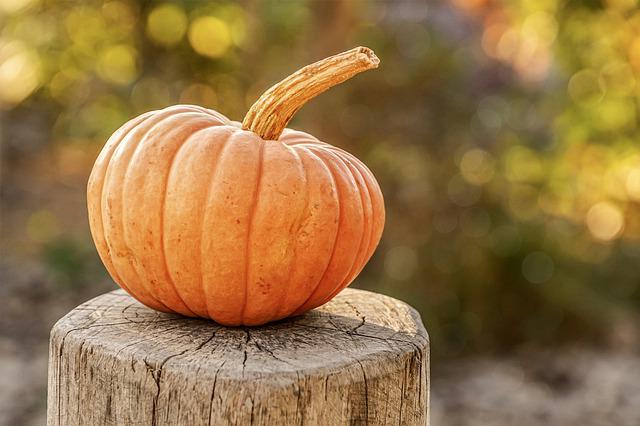How Long Do Pumpkins Take To Grow? A Guide to Growing the Pumpkins

Pumpkins usually take between 90 and 120 days to grow. A few weeks before the pumpkins are ready to be picked, take off any leaves shading the plant. This will help the pumpkins have more color.
The following things affect how pumpkins grow:
- Pumpkin Pollination Time- Pollination is important for making sure your plants produce fruit. Eight to nine weeks after the seeds are planted, the male flowers appear. A few days later, the female flowers show up. About seven days after the female flowers show up, you’ll start to see pumpkins growing.
- Fruit Development Period After Flowering- After successful pollination, the pumpkin takes 45 and 55 days to reach maturity. The pumpkin begins to grow larger, and its color changes based on the planted variety. The stems die once the pumpkins are ripe, signifying that harvest time has arrived.
- Harvest Time- Once the fruit has been harvested, it should be stored for approximately two weeks at approximately 25°C. This will increase the lifespan. Then, place the fruit in a cool, dry location with temperatures between 10-12°C.
Table of Contents
8 Phases of Pumpkin Plant Development
Seed
Similar to the majority of other fruits, pumpkins begin as seeds. Simply plant the pale yellow, triangular-shaped seed in warm soil and wait a couple of weeks for the leaves to emerge.
Sprouts
Two green growths resembling leaves will emerge from the ground. These are sprouts that will eventually develop into a pumpkin plant.
Leaves
After about a week of emerging from the soil, the pumpkin seedlings begin to produce leaves. Those leaves will continue to expand for the next few weeks.
Vines
Following the development of leaves, the pumpkin plant develops its vines. The vines continue to grow in height. If the conditions are favorable and the pumpkin vines receive sufficient water, they can grow like 6 inches per day.
Pumpkin Blossom
The male flowers bloom first, followed by the females approximately ten days later. Both components are required for pollination to occur.
Green Pumpkin
After the female flowers have closed, a green pumpkin begins to form. Once you observe them, you will know that the pollination process was effective.
A Changing Pumpkin
The size of the green pumpkin continues to increase over time as soon as they reach their final size, the color changes.

Time for a Pumpkin Party
Once the pumpkins are ready to be harvested, the pumpkin vines begin to turn brown. At this stage, pumpkins can be harvested and enjoyed to the fullest.
Pumpkin Plant Growth
Germination
Pumpkins can be grown from seed, but it’s important to be aware of a few things first. Pumpkins grow at varying rates depending on the variety. It is important to know how long it will take to harvest seeds when you purchase them. Look up the specific variety you own if that helps. Most pumpkin varieties mature and bear fruit between 90 and 110 days if you aren’t sure which one you have.
Pumpkin seeds germinate and sprout in a short period. They’re quite quick! A pumpkin seed’s germination time is usually around ten days. This stage is rarely fraught with difficulties. As fast as it moves, it’s impossible to catch any problems in time. The good news is that if your plants aren’t growing, you’ll know about it quickly. Ten days after planting, your seeds should be replaced with new ones.
Maturing
A pumpkin plant’s primary function is to produce long, slender roots. Depending on the pumpkin you have, you could have vines up to 20 feet long! When it comes to pumpkins, this is where you’re most likely to encounter difficulties.
It’s possible that pests, for example. Squash vine borers and beetles are two of the most common pests on squash plants. Covering your plants when they’re young can help keep pests like beetles. A good option for a garden fabric allows light in a while, keeping insects out. When the plants are older and more tolerant of beetles, they can be exposed.
Unlike mites, borers are best dealt with by hand. A covering won’t always keep them out because they’re caterpillars. Instead, keep an eye out for signs of their presence and remove them with a knife or box cutter.
Harvesting
Your pumpkin plant should begin flowering eight to nine weeks after planting, depending on the variety. You can expect your first pumpkins to emerge in about a week more. The type you have makes a significant difference when it comes to pumpkin maturation. As a general rule, smaller pumpkins will mature faster than larger ones.
It doesn’t matter how big or small your pumpkins are; you can tell when they’re ripe. They should be uniform in color and hard to touch on the outside. Even if you hit it with the palm of your hand or press your fingernails into it, you shouldn’t harm the pumpkin.
Some fruits and vegetables can be harvested before they are fully ripe and then allowed to ripen on the vine. Pumpkins, on the other hand, are not among them. Because their rind hasn’t had as much time to harden, pumpkins that are picked before they’re ripe don’t last as long as ripe pumpkins. Do not leave them on the vine after they have ripened, hoping that they will grow larger. You can avoid a lot of heartache and hassle if you choose a variety that naturally grows to the desired size.
Accelerating Growth
Pumpkin growth can be sped up a little, but it’s not an exact science. Making certain your plants have all the nutrients required is the best way to ensure a quick harvest. Sunlight and water, in particular, are excellent examples of this. Pumpkins are drawn to the sun, which causes water to evaporate more quickly, requiring more frequent watering due to the increased evaporation.
A trellis isn’t going to speed up the growth of your pumpkins as much as a lot of sunlight and water, but you can expect a more robust and healthy harvest if you do. Pumpkins are protected from pests and disease, and rot by elevated above the ground.
Remember that it takes time to grow, even if you’re going for a small pumpkin. After all, you can’t rush perfection! Pumpkins can be grown in your garden now that you know how long it takes them to mature. And if you still have some pumpkins to use up, here are some ideas.

